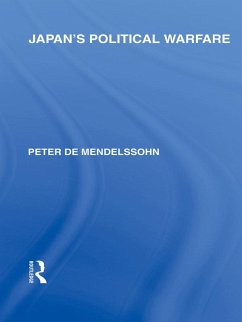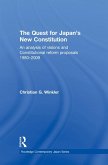After more than six years of active fighting in the Far East and over two years of open war between Japan and the Anglo-Saxon powers, Japanese political warfare was still a factor largely unknown in the Western world. Overshadowed by the much nearer and more closely felt exertions of the Nazi propaganda machine, it came to be regarded as too remote to have any noticeable bearing on the general course of the war. In the months leading up to Pearl Harbour, Tokyo Radio, the official Domei News Agency and the Japanese press jointly conducted an efficient war of nerves which, for all its alleged clumsiness effectively deceived many in Britain and the USA. The attack on Pearl Harbour showed how Tokyo's political warfare achieved its object: the creation of a political smoke-screen. During the period of Japan's conquests in 1942 following Pearl Harbour, and before that in China, Japan's political warfare showed itself quite capable of producing useful results.The volume is divided into two parts: the first deals with machinery and methods and gives as full and detailed a survey of the various government organs directing and controlling political warfare, the structure of the Japanese press, the organisation of Japanese broadcasting, the functioning of censorship and the extent to which education, science, literature, the arts and the cinema are being employed for purposes of propaganda, both in the Japanese homeland and in the wider area of the conquered empire. The second part deals with the aims and policies of Japanese propaganda, and attempts to give an outline of the way in which the machinery is being operated. It includes an analysis of the main groups of standard slogans and catchphrases which recur everywhere in Japanese propaganda and a special chapter is devoted to the use made of religion for purposes of political warfare.
Dieser Download kann aus rechtlichen Gründen nur mit Rechnungsadresse in A, B, BG, CY, CZ, D, DK, EW, E, FIN, F, GR, HR, H, IRL, I, LT, L, LR, M, NL, PL, P, R, S, SLO, SK ausgeliefert werden.









